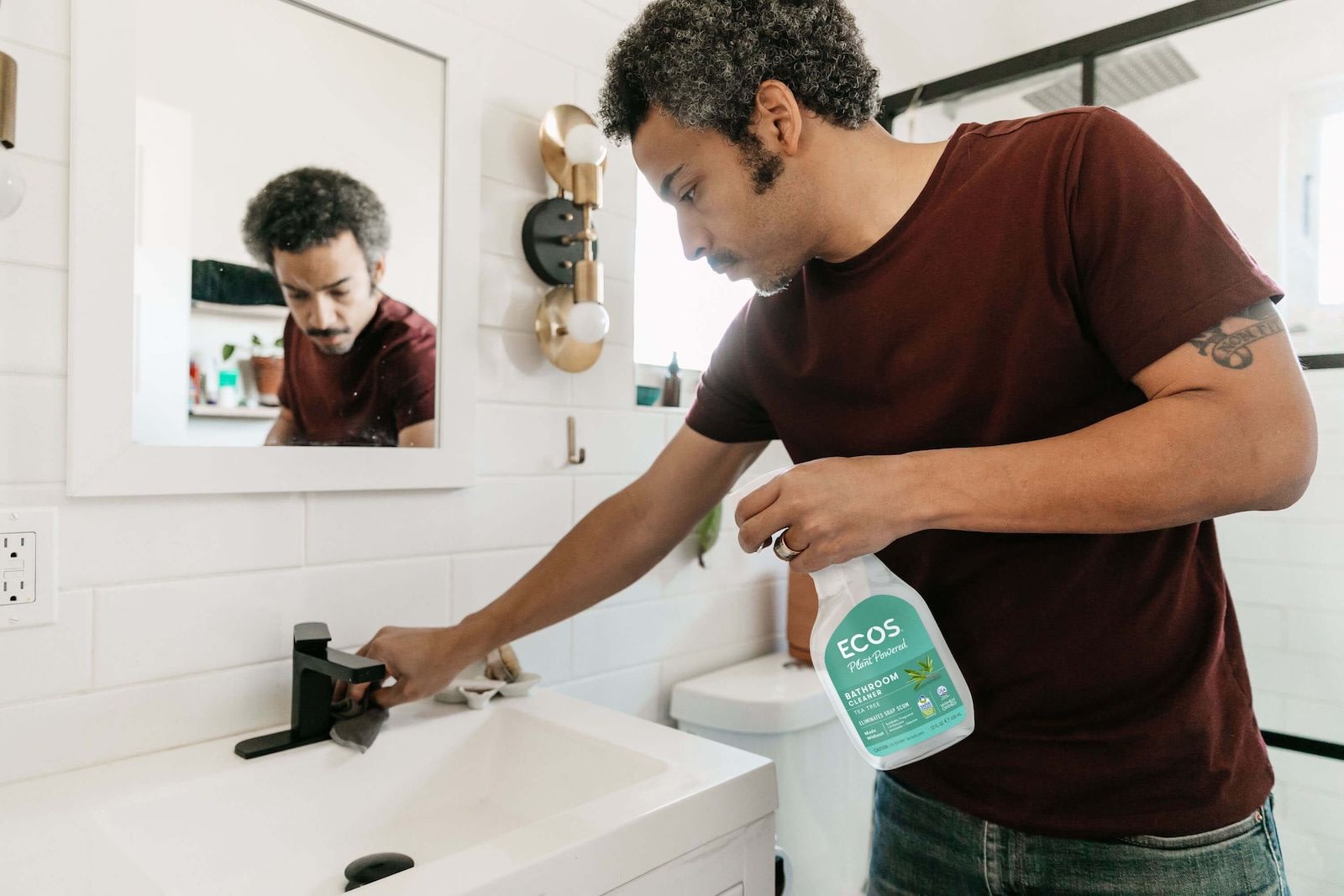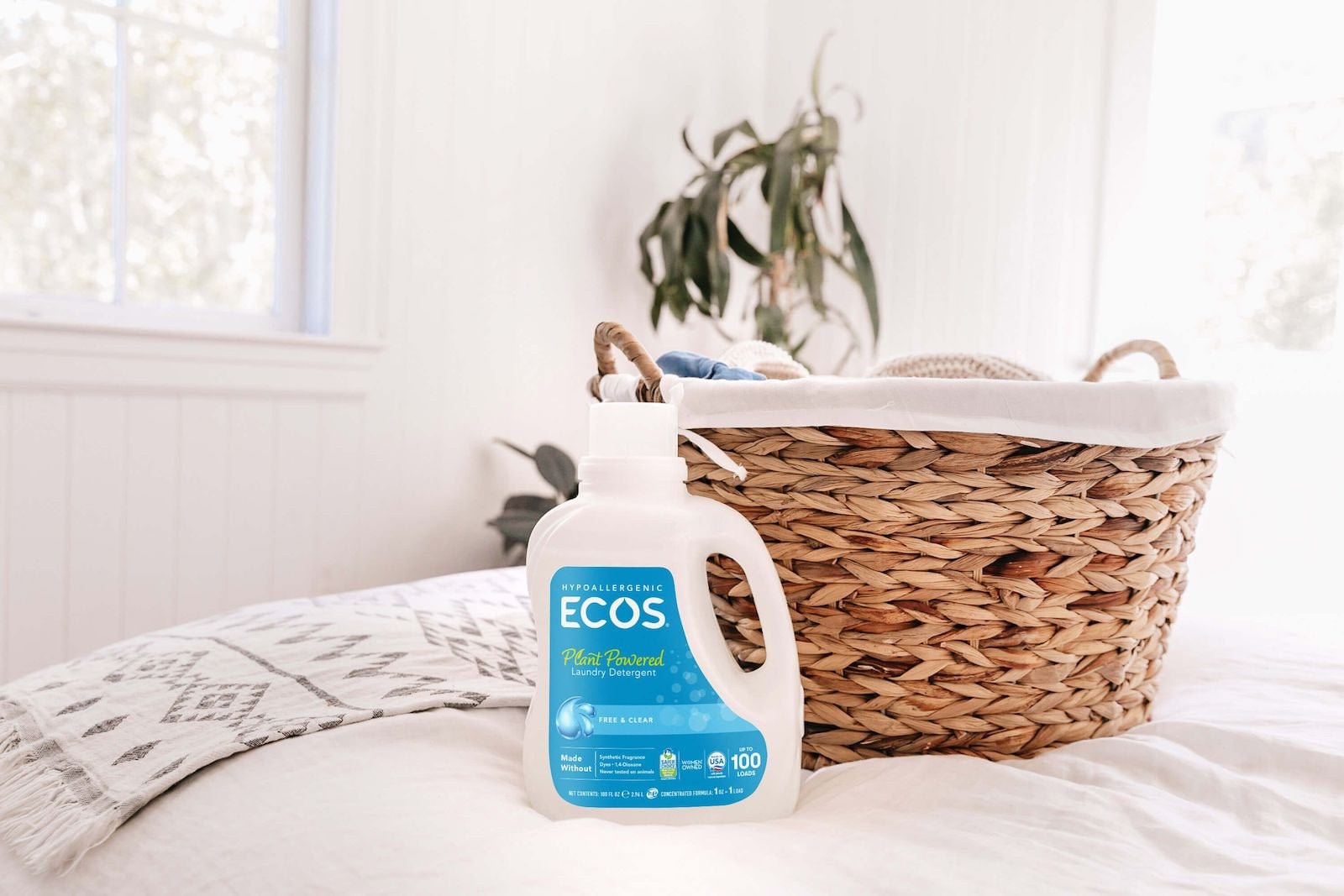6 Common Toxins Found in Household Cleaners
3 minute read

As a conscientious consumer, it’s important to be aware of the potential toxins lurking in your everyday household cleaners, so you can make smarter choices and create a healthier living space for yourself and your loved ones. Let’s explore some of these toxins and learn how to opt for safer alternatives.
Phthalates: Unveiling the Hidden Chemicals
Found In: Scented Air Fresheners, Dish Soaps, and Cleaning Products
While phthalates may not be explicitly listed on labels, it’s crucial to be cautious of their potential risks, especially concerning reproductive health.
Phthalates have been linked to health problems – especially with reproductive health. According to the CDC, some types of phthalates have affected the reproductive systems of animals, although the long-term health risks to humans are less clear.
Generally, if a product is scented and doesn’t specifically say it’s made without phthalates, it may have phthalates. If you prefer scented products, look for options that explicitly state they are phthalate-free to reduce potential exposure. ECOS products, for instance, are made without phthalates, helping you enjoy safer ingredients and clean-smelling scents without compromising on effectiveness.
MEA, DEA, and TEA: The Balance of Emulsifiers
Found In: Liquid Laundry Detergents, All-Purpose Cleaners, and Other Household Cleaners
MEA, DEA, and TEA are commonly used ethanolamines found in many household cleaners as emulsifiers. These three chemicals prevent liquid ingredients from separating or clumping.While they are not highly hazardous on their own, they can be contaminated with substances like 1,4-dioxane, which is considered a potential carcinogen. Some studies have also linked MEA to asthma and DEA to skin irritation. When selecting cleaning products, consider alternatives that prioritize safety and minimize the risk of contamination.

Phosphates: A Concern for the Environment
Found In: Bathroom Cleaners, Laundry Detergents, and Dishwasher Detergents
Phosphates are generally safe for human use, but can have detrimental effects on the environment. Cleaning product companies use phosphates as chelating agents, which means they soften water to prevent mineral buildup on the surfaces you’re trying to clean. Tap water may naturally contain magnesium and calcium ions, and phosphates prevent these ions from affecting the quality of your clean.
Phosphates appear to be safe for use around humans. However, they may be particularly harmful to the environment. Studies show phosphates have disastrous effects on waterways, for example, because they promote the growth of algae blooms, sucking oxygen from water and killing aquatic life.
Dyes: Uncovering the Hidden Risks
Found In: Soaps, All-Purpose Cleaners, and Liquid Laundry Detergents
Dyes can impact human health and contribute to indoor air pollution. Many household cleaners use dyes for appearance. Synthetic dyes, such as coal tar dye, are known to accumulate in the body and have been associated with skin irritation and indoor air quality issues. To reduce potential risks, opt for cleaning products that do not rely on synthetic dyes.
Many household cleaners contain coal tar dye, which is a type of synthetic dye that gives some laundry detergents a bright blue color. Coal tar is a known human carcinogen, and studies show the molecules within coal tar dye could accumulate in your body.
To reduce potential risks, opt for cleaning products that do not rely on synthetic dyes.

Bleach: Power and Precaution Go Hand in Hand
Found In: Laundry Detergents & Household Cleaners
Bleach is a powerful household cleaner known for its disinfecting properties. However, it can also cause skin irritation and burning. Ingesting bleach or mixing it with ammonia can have severe consequences, including serious illness or even death. Handle bleach with caution and consider safer alternatives for your cleaning needs when possible.
Formaldehyde: An Unwanted Presence in Air Fresheners
Found In: Air Fresheners & Certain Scented Household Cleaning Products
To maintain fresher indoor air without relying on formaldehyde, choose products that explicitly state they are formaldehyde-free. Look for brands like ECOS that offer safer options, such as the ECOS Fabric Odor Eliminators, which utilizes natural fragrances and plant sugars to eliminate odors effectively.
Final Word: Make Smarter Choices with Safer Ingredients
By making smarter choices and opting for products with safer ingredients, you can create a healthier living environment. Consider brands like ECOS made with safer ingredients, including sustainable ingredients like coconut and bamboo. We make products without dyes, formaldehyde, 1,4-dioxane, parabens, phosphates, phthalates, pearlizers, or optical brighteners, while maintaining high standards for efficacy.
With over 55 years of experience and over 90 Safer Choice-certified cleaning products, ECOS is a safer choice for you and your family.
